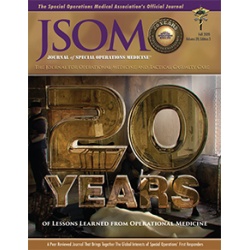Latest Products
Risk of Harm Associated With Using Rapid Sequence Induction Intubation and Positive Pressure Ventilation in Patients With Hemorrhagic Shock
Thompson P, Hudson AJ, Convertino VA, Bjerkvig C, Eliassen HS, Eastridge BJ, Irvine-Smith T, Braverman MA, Hellander S, Jenkins DH, Rappold JF, Gurney JM, Glassberg E, Cap AP, Aussett S, Apelseth TO, Williams S, Ward KR, Shackelford SA, Stroberg P, Vikeness BH, Pepe PE, Winckler CJ, Woolley T, Enbuske S, De Pasquale M, Boffard KD, Austlid I, Fosse TK, Asbjornsen H, Spinella PC, Strandenes G 20(3). 97 - 102 (Editorial)
Based on limited published evidence, physiological principles, clinical experience, and expertise, the author group has developed a consensus statement on the potential for iatrogenic harm with rapid sequence induction (RSI) intubation and positive-pressure ventilation (PPV) on patients in hemorrhagic shock. "In hemorrhagic shock, or any low flow (central hypovolemic) state, it should be noted that RSI and PPV are likely to cause iatrogenic harm by decreasing cardiac output." The use of RSI and PPV leads to an increased burden of shock due to a decreased cardiac output (CO)2 which is one of the primary determinants of oxygen delivery (DO2). The diminishing DO2 creates a state of systemic hypoxia, the severity of which will determine the magnitude of the shock (shock dose) and a growing deficit of oxygen, referred to as oxygen debt. Rapid accumulation of critical levels of oxygen debt results in coagulopathy and organ dysfunction and failure. Spontaneous respiration induced negative intrathoracic pressure (ITP) provides the pressure differential driving venous return. PPV subsequently increases ITP and thus right atrial pressure. The loss in pressure differential directly decreases CO and DO2 with a resultant increase in systemic hypoxia. If RSI and PPV are deemed necessary, prior or parallel resuscitation with blood products is required to mitigate post intervention reduction of DO2 and the potential for inducing cardiac arrest in the critically shocked patient.


 Español
Español 





